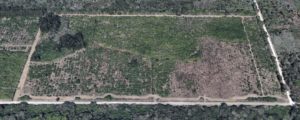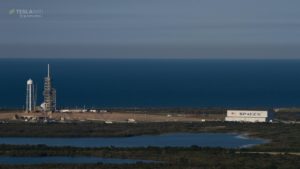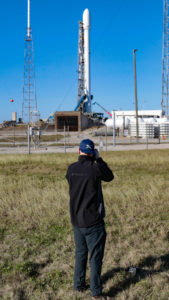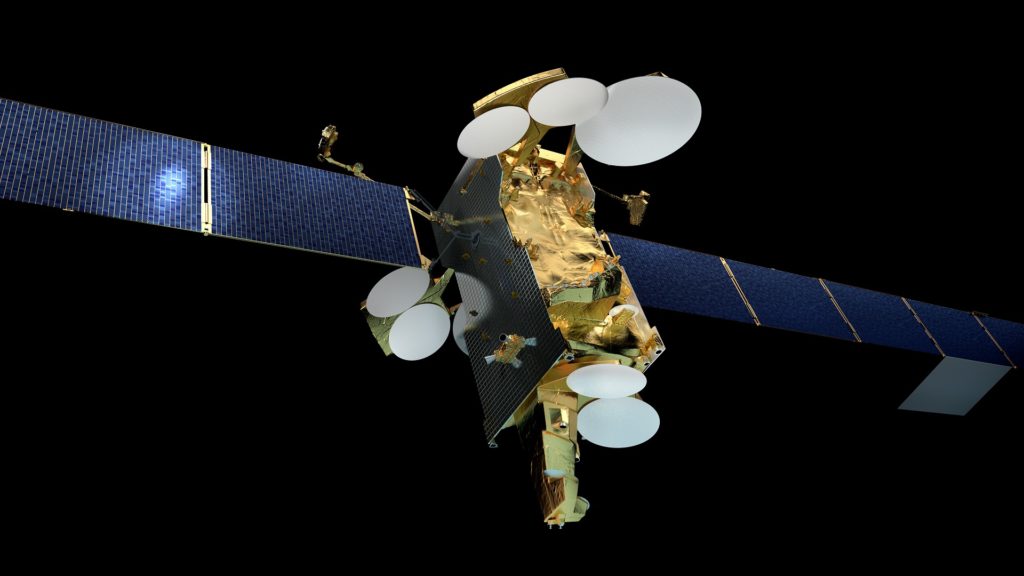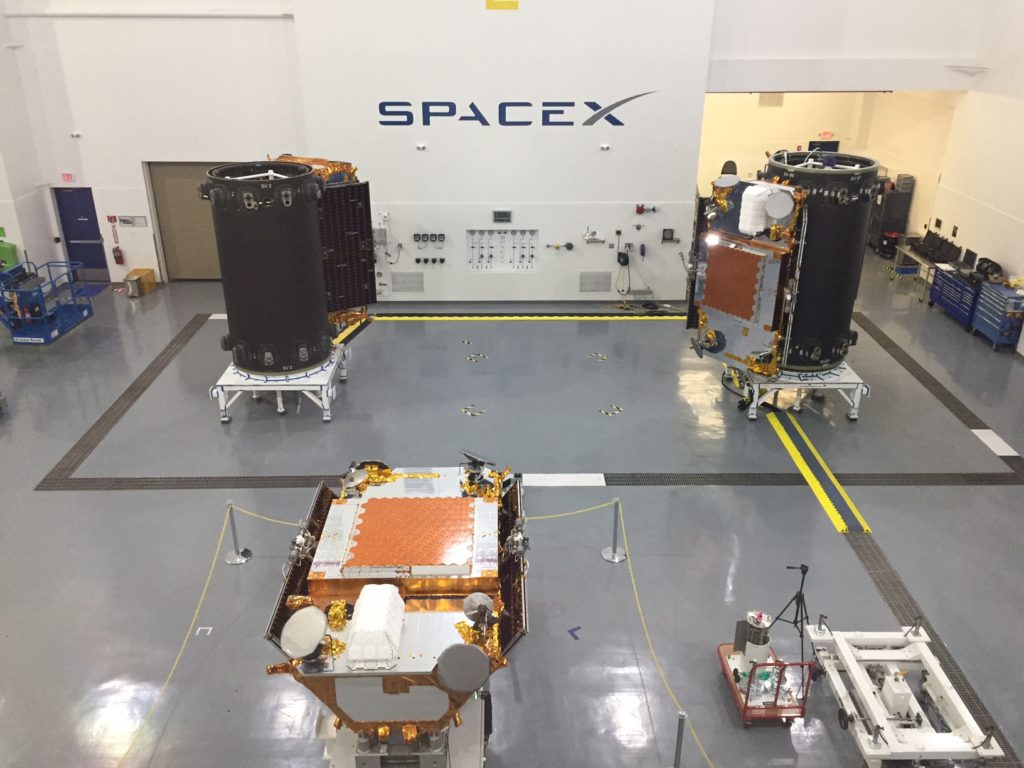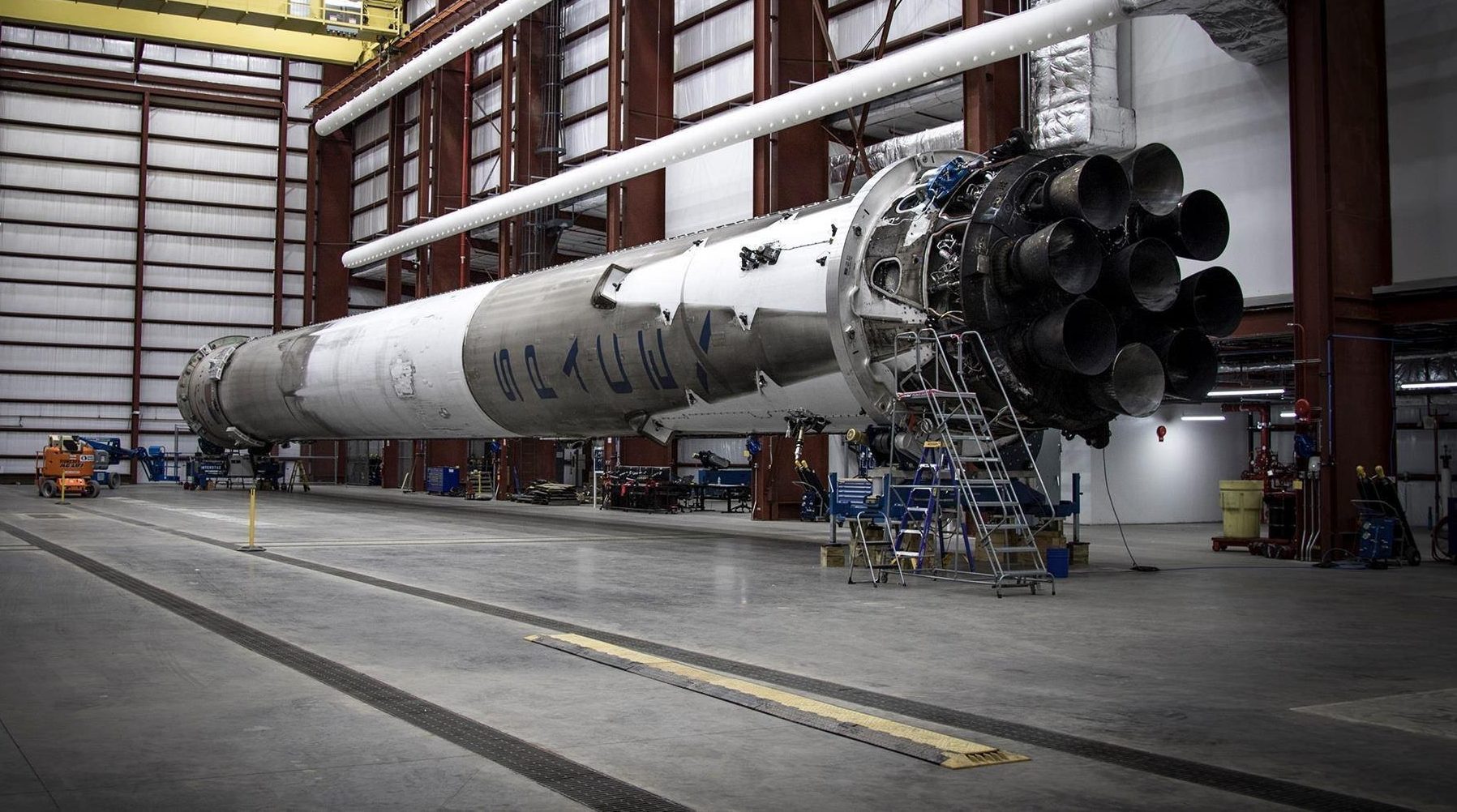

News
SpaceX to receive $15m from Florida to build Falcon refurbishment facility
The state of Florida’s Space Florida initiative is likely to award SpaceX nearly $15 million in support of the company’s recently-publicized plan to build a new Falcon rocket refurbishment facility and launch control center on Kennedy Space Center property.
All things considered, such an investment would be an extremely savvy move for the state, potentially speeding up an expansion that will pave the way – quite literally in terms of infrastructure — for SpaceX to support a dramatically larger launch cadence in Florida. Writing in an environmental assessment (EA) for the Richards Road project discovered in early June, the company provided a rough estimate for what that growth could look like:
“SpaceX estimates a possible 150 construction jobs associated with the initial development of the Proposed Action, and approximately 70 new SpaceX employees to support additional operations on KSC. SpaceX plans to launch more than 4,000 satellites with the intention that most of these satellites will be launched from LC-39A and LC-40.” (p. 39)
- Satellite imagery from Google Maps shows the currently-abandoned site of SpaceX’s prospective Florida expansion. (Google Maps)
- SpaceX’s Launch Complex 39A pictured in April 2018. (Tom Cross)
- TomCross photographing Falcon 9 with the Zuma payload at SLC-40.
In the case of “most” of “more than 4,000 satellites” being launched from Florida, SpaceX is undoubtedly referring to the first phase of their Starlink internet constellation, a program that is also rapidly growing an R&D team to complete the system’s production-ready design and build a state-of-the-art factory for the vast majority of the network’s major components. For context, 70-90 additional new employees would grow SpaceX’s Florida presence by as much as 20-30% from 2018 levels.
Teslarati reached out to SpaceX for further clarification on the Starlink-related comments in the EA, but the company could not be reached for comment on the matter. However, SpaceX was later able to provide a statement on their prospective Richards Road expansion, reprinted below.
“As SpaceX’s launch cadence and manifest for missions from Florida continues to grow, we are seeking to expand our capabilities and streamline operations to launch, land and re-fly our Falcon family of rockets.”
It’s worth noting that SpaceX President and COO Gwynne Shotwell told CNBC reporters in May 2018 that the company expected 2019 to look more like 2017 (18 launches), suggesting that next year will likely be 30-50% slower than its busy 2018 launch schedule. Although the COO did state that “2019 [will] probably be closer to 2017 due to lower demand”, she didn’t explicitly include non-commercial launches in her figuring.
- While SpaceX’s 2018 manifest is likely to support more annual launches than the company has yet to achieve, the trend slopes a bit down in the 12-24 months that follow. The SES-12 satellite is shown here and was launched in June 2018. (SES)
- Iridium NEXT satellites being attached to the payload dispenser at SpaceX’s VAFB facilities. Iridium’s contract for eight launches should be completed by Q4 2018. (Iridium)
Combined with SpaceX’s official statement that its Florida manifest “continues to grow”, an observation that at face-value plainly contradicts the Chief Operating Officer’s on-record estimations, it seems almost impossible that that manifest growth is not largely a consequence of internal plans to dedicate a number of launches to Starlink satellites. As of June 2018, crowdsourced SpaceX launch manifests show a total of 20 possible launches in 2019 and 12 in 2020 – while plausible that a number of additional missions will be contracted or publicly announced as time marches on, it’s somewhat less plausible that those missions will push SpaceX’s commercial launch demand up to or above 2018 levels (24-28 launches).
https://twitter.com/elonmusk/status/875849793204928512
Starlink launches thus make sense as a gap-filler for the one or two demand-sapped years likely to follow 2018, too near for SpaceX’s reusability-associated launch price drops to make a difference and too early for the company’s full-reusable BFR to come online. Rather conveniently, the production of roughly 12 new Block 5 Falcon 9s and Heavies per year would almost certainly keep all of SpaceX’s rocket manufacturing facilities busy, while also leaving an unfathomably vast fleet of stagnant Block 5 boosters (and hopefully payload fairings) available for any internal missions required by the Starlink program. If Patricia Cooper’s late-2017 statements are still roughly true today, SpaceX plans to begin the first dedicated launches of operational Starlink satellites in 2019, perfectly coinciding with their publicly anticipated lull in commercial launch demand.
Although it does depend on an extraordinarily rapid and successful ramp of the Starlink program, the paradoxical opportunity presented to SpaceX by launch demand lulls in 2019 and 2020 is hard to deny. Around the same time, one would expect the market for launches to begin to seriously respond to the arrival of a new, more affordable paradigm of orbital access, potentially culminating in an unprecedented demand for commercial launches as the price of entry begins to drop appreciably.
News
Tesla UK sales see 14% year-over-year rebound in June: SMMT data
The SMMT stated that Tesla sales grew 14% year-over-year to 7,719 units in June 2025.

Tesla’s sales in the United Kingdom rose in June, climbing 14% year-over-year to 7,719 units, as per data from the Society of Motor Manufacturers and Traders (SMMT). The spike in the company’s sales coincided with the first deliveries of the updated Model Y last month.
Model Y deliveries support Tesla’s UK recovery
Tesla’s June performance marked one of its strongest months in the UK so far this year, with new Model Y deliveries contributing significantly to the company’s momentum.
While the SMMT listed Tesla with 7,719 deliveries in June, independent data from New AutoMotive suggested that the electric vehicle maker registered 7,891 units during the month instead. However, year-to-date figures for Tesla remain 2% down compared to 2024, as per a report from Reuters.
While Tesla made a strong showing in June, rivals are also growing. Chinese automaker BYD saw UK sales rise nearly fourfold to 2,498 units, while Ford posted the highest EV growth among major automakers, with a more than fourfold increase in the first half of 2025.
Overall, the UK’s battery electric vehicle (BEV) demand surged 39% to to 47,354 units last month, helping push total new car sales in the UK to 191,316 units, up 6.7% from the same period in 2024.
EV adoption accelerates, but concerns linger
June marked the best month for UK car sales since 2019, though the SMMT cautioned that growth in the electric vehicle sector remains heavily dependent on discounting and support programs. Still, one in four new vehicle buyers in June chose a battery electric vehicle.
SMMT Chief Executive Mike Hawes noted that despite strong BEV demand, sales levels are still below regulatory targets. “Further growth in sales, and the sector will rely on increased and improved charging facilities to boost mainstream electric vehicle adoption,” Hawes stated.
Also taking effect this week was a new US-UK trade deal, which lowers tariffs on UK car exports to the United States from 27.5% to 10%. The agreement could benefit UK-based EV producers aiming to expand across the country.
News
Tesla Model 3 ranks as the safest new car in Europe for 2025, per Euro NCAP tests
Despite being on the market longer than many of its rivals, the Tesla Model 3 continues to set the bar for vehicle safety.

The Tesla Model 3 has been named the safest new car on sale in 2025, according to the latest results from the Euro NCAP. Among 20 newly tested vehicles, the Model 3 emerged at the top of the list, scoring an impressive 359 out of 400 possible points across all major safety categories.
Tesla Model 3’s safety systems
Despite being on the market longer than many of its rivals, the Tesla Model 3 continues to set the bar for vehicle safety. Under Euro NCAP’s stricter 2025 testing protocols, the electric sedan earned 90% for adult occupant protection, 93% for child occupant protection, 89% for pedestrian protection, and 87% for its Safety Assist systems.
The updated Model 3 received particular praise for its advanced driver assistance features, including Tesla’s autonomous emergency braking (AEB) system, which performed well across various test scenarios. Its Intelligent Speed Assistance and child presence detection system were cited as noteworthy features as well, as per a WhatCar report.
Other notable safety features include the Model 3’s pedestrian-friendly pop-up hood and robust crash protection for both front and side collisions. Euro NCAP also highlighted the Model 3’s ability to detect vulnerable road users during complex maneuvers, such as turning across oncoming traffic.
Euro NCAP’s Autopilot caution
While the Model 3’s safety scores were impressive across the board, Euro NCAP did raise concerns about driver expectations of Tesla’s Autopilot system. The organization warned that some owners may overestimate the system’s capabilities, potentially leading to misuse or inattention behind the wheel. Even so, the Model 3 remained the highest-scoring vehicle tested under Euro NCAP’s updated criteria this year.
The Euro NCAP’s concerns are also quite interesting because Tesla’s Full Self-Driving (FSD) Supervised, which is arguably the company’s most robust safety suite, is not allowed for public rollout in Europe yet. FSD Supervised would allow the Model 3 to navigate inner city streets with only minimal human supervision.
Other top scorers included the Volkswagen ID.7, Polestar 3, and Geely EX5, but none matched the Model 3’s total score or consistency across categories. A total of 14 out of 20 newly tested cars earned five stars, while several models, including the Kia EV3, MG ZS, and Renault 5, fell short of the top rating.
Elon Musk
Why Tesla’s Q3 could be one of its biggest quarters in history
Tesla could stand to benefit from the removal of the $7,500 EV tax credit at the end of Q3.

Tesla has gotten off to a slow start in 2025, as the first half of the year has not been one to remember from a delivery perspective.
However, Q3 could end up being one of the best the company has had in history, with the United States potentially being a major contributor to what might reverse a slow start to the year.
Earlier today, the United States’ House of Representatives officially passed President Trump’s “Big Beautiful Bill,” after it made its way through the Senate earlier this week. The bill will head to President Trump, as he looks to sign it before his July 4 deadline.
The Bill will effectively bring closure to the $7,500 EV tax credit, which will end on September 30, 2025. This means, over the next three months in the United States, those who are looking to buy an EV will have their last chance to take advantage of the credit. EVs will then be, for most people, $7,500 more expensive, in essence.
The tax credit is available to any single filer who makes under $150,000 per year, $225,000 a year to a head of household, and $300,000 to couples filing jointly.
Ending the tax credit was expected with the Trump administration, as his policies have leaned significantly toward reliance on fossil fuels, ending what he calls an “EV mandate.” He has used this phrase several times in disagreements with Tesla CEO Elon Musk.
Nevertheless, those who have been on the fence about buying a Tesla, or any EV, for that matter, will have some decisions to make in the next three months. While all companies will stand to benefit from this time crunch, Tesla could be the true winner because of its sheer volume.
If things are done correctly, meaning if Tesla can also offer incentives like 0% APR, special pricing on leasing or financing, or other advantages (like free Red, White, and Blue for a short period of time in celebration of Independence Day), it could see some real volume in sales this quarter.
You can now buy a Tesla in Red, White, and Blue for free until July 14 https://t.co/iAwhaRFOH0
— TESLARATI (@Teslarati) July 3, 2025
Tesla is just a shade under 721,000 deliveries for the year, so it’s on pace for roughly 1.4 million for 2025. This would be a decrease from the 1.8 million cars it delivered in each of the last two years. Traditionally, the second half of the year has produced Tesla’s strongest quarters. Its top three quarters in terms of deliveries are Q4 2024 with 495,570 vehicles, Q4 2023 with 484,507 vehicles, and Q3 2024 with 462,890 vehicles.
-

 Elon Musk4 days ago
Elon Musk4 days agoTesla investors will be shocked by Jim Cramer’s latest assessment
-

 News1 week ago
News1 week agoTesla Robotaxi’s biggest challenge seems to be this one thing
-

 Elon Musk2 weeks ago
Elon Musk2 weeks agoFirst Look at Tesla’s Robotaxi App: features, design, and more
-

 News2 weeks ago
News2 weeks agoSpaceX and Elon Musk share insights on Starship Ship 36’s RUD
-

 News2 weeks ago
News2 weeks agoWatch Tesla’s first driverless public Robotaxi rides in Texas
-

 News1 week ago
News1 week agoWatch the first true Tesla Robotaxi intervention by safety monitor
-

 News2 weeks ago
News2 weeks agoTesla has started rolling out initial round of Robotaxi invites
-

 Elon Musk2 weeks ago
Elon Musk2 weeks agoTesla to launch in India in July with vehicles already arriving: report

